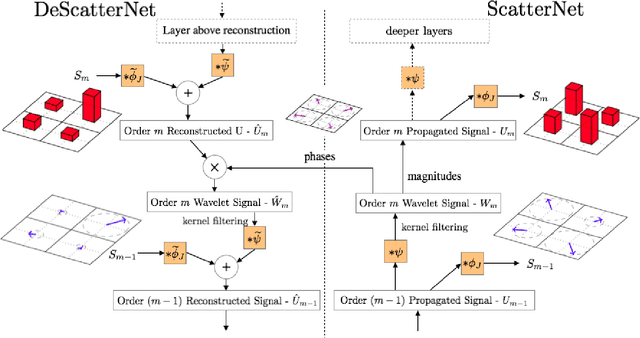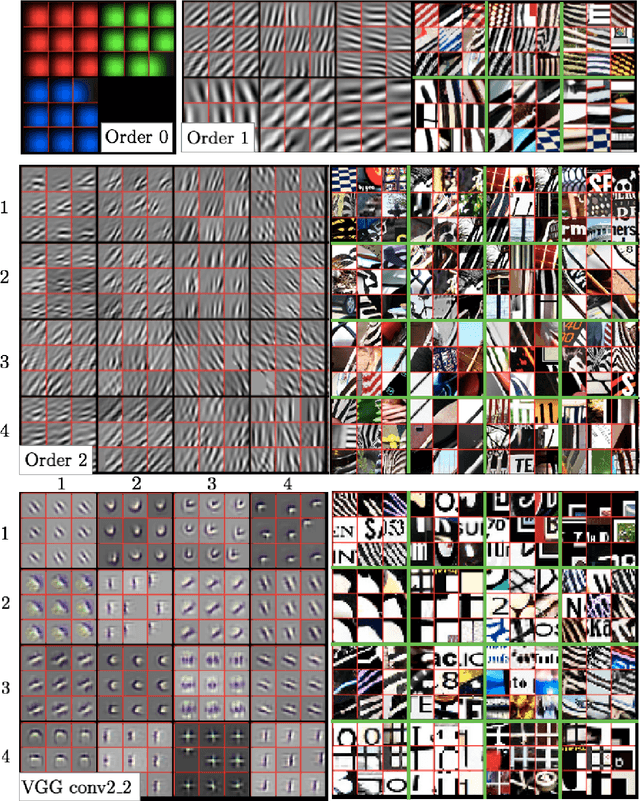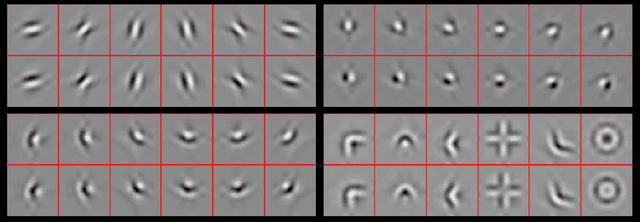Visualizing and Improving Scattering Networks
Paper and Code
Sep 05, 2017


Scattering Transforms (or ScatterNets) introduced by Mallat are a promising start into creating a well-defined feature extractor to use for pattern recognition and image classification tasks. They are of particular interest due to their architectural similarity to Convolutional Neural Networks (CNNs), while requiring no parameter learning and still performing very well (particularly in constrained classification tasks). In this paper we visualize what the deeper layers of a ScatterNet are sensitive to using a 'DeScatterNet'. We show that the higher orders of ScatterNets are sensitive to complex, edge-like patterns (checker-boards and rippled edges). These complex patterns may be useful for texture classification, but are quite dissimilar from the patterns visualized in second and third layers of Convolutional Neural Networks (CNNs) - the current state of the art Image Classifiers. We propose that this may be the source of the current gaps in performance between ScatterNets and CNNs (83% vs 93% on CIFAR-10 for ScatterNet+SVM vs ResNet). We then use these visualization tools to propose possible enhancements to the ScatterNet design, which show they have the power to extract features more closely resembling CNNs, while still being well-defined and having the invariance properties fundamental to ScatterNets.
 Add to Chrome
Add to Chrome Add to Firefox
Add to Firefox Add to Edge
Add to Edge